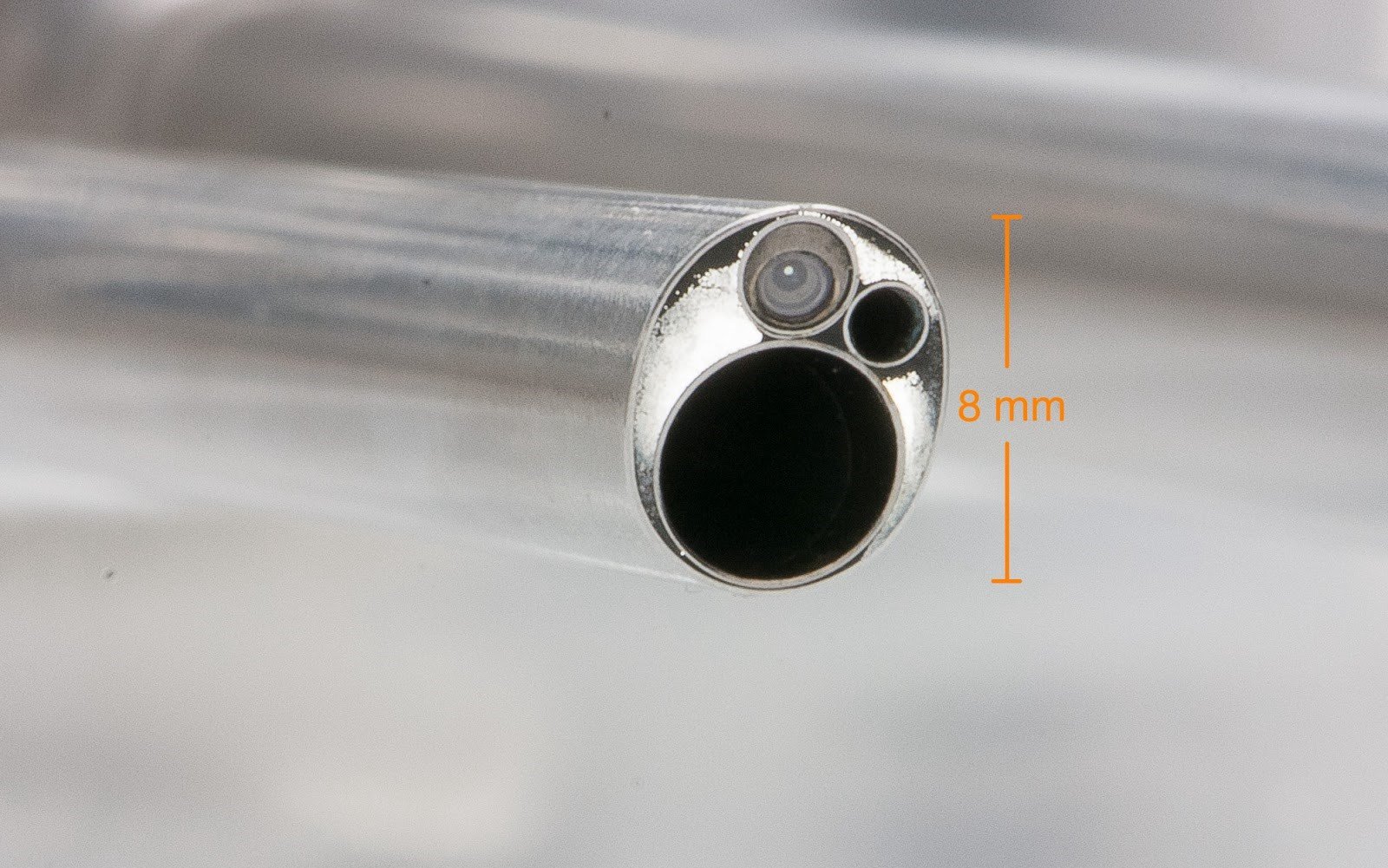These days, endoscopic spine surgery is quickly becoming the method of choice for many patients due to its shortened post-surgical recovery time. Let’s see how it works and how it’s different from surgical procedures in the past
What’s an Endoscope?
An Endoscope takes the form of a thin, long tube with a viewing lens attached on the tip, which acts as the “surgeon’s eye”. The surgeon can insert tools through this tube to clamp or remove herniated disc accurately this way. Basically, an endoscope is a tube that is inserted inside the patient’s body.
An endoscope has a diameter of about 8 millimeters with a lens attached at the tip, giving the surgeon clear imaging capability inside the patient’s body.

A Smaller Incision for Larger Vision
In the past, when performing surgery with a microscope, it is true that a larger incision means more light gets through which results in better visibility. However, many types of surgical procedures including abdominal surgery, gynecology, and even brain surgery now use endoscope technology. An endoscope has a lens and light source attached at the tip which surgeons can insert inside the patient’s body to the wound’s location, giving clear vision as the surgeon is able to see inside much better with less blind spots than a microscope or other technology that are not actually inserted inside the patient’s body.
How is an Endoscope Different from a Microscope?
Endoscope is a more recent technology. It is inserted inside the patient’s body so the resulting imaging is much more clearer. On the other hand, a microscope is used to magnify and the microscope itself is not inserted, therefore requiring larger incisions to allow light to pass through to the wound, for example in the case of a patient with obesity. An endoscope does not have this drawback because it is inserted into the body, giving full view regardless of the patient’s body size.
Risk of Endoscopic Spine Surgery
The risks remain the same for endoscopic spine surgery as with other traditional methods of surgery, but the patient will be able to recover much faster due to the smaller incision and less blood loss. Risk of infection is also very low for this method.
Post-Surgical Recovery
Most patients can walk immediately after the anesthetic medications wear off and are able to leave the hospital within 24 hours of completing the surgery.
Preventing Recurrence
An endoscopic spine surgery simply removes the herniated disc. Therefore, if we do not take proper care going forward, it is possible for the same problem to reoccur. Proper care includes exercising to strengthen the core muscles, cardio activities to lower body fat, and learning the proper postures in your daily life. Doing all of this will considerably help prevent the recurrence of herniated discs.
About the author

Dr. Withawin Kesornsak is a neurological surgeon who has been specially trained in minimally-invasive spine surgery in Germany and the United Kingdom. In addition to practicing spine surgery at Bumrungrad International Hospital, he also instructs in the endoscopic spine surgery course in Germany and Thailand. He has a special interest in continuing education and currently working with AOspine giving lectures in many countries as well.
For more information please contact:
Last modify: April 30, 2025